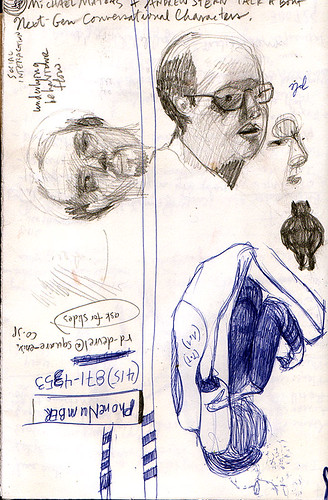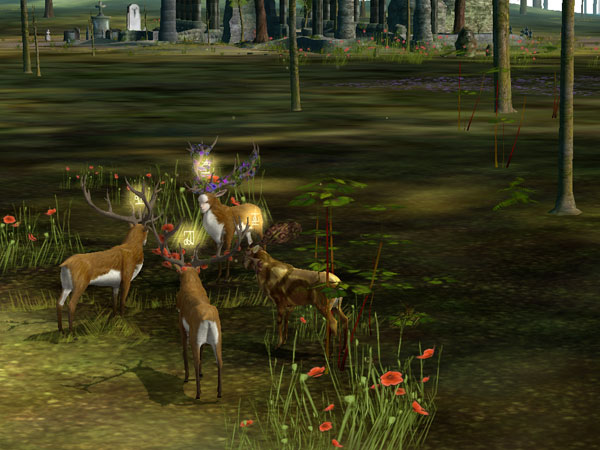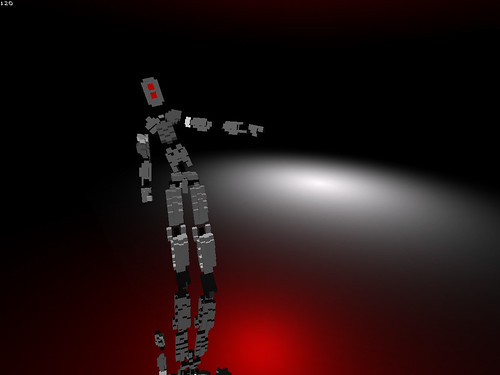It was the first time that we attended the Game Developers Conference in San Francisco. But we had attended the London version before (in 2002, 2003 and 2004). In fact, I had a personal ban on visiting the USA. For obvious reasons. But BGIn offered us an opportunity that we couldn’t pass on. We could have some space in their booth to show our work for almost no money (thanks to governmental subsidies), including access to the conference. It would also be a good opportunity to meet up with some friends.
 So I had my privacy violated by the American customs in ways that would be illegal in my own country, while telling myself “this is for business, stay calm, don’t think, it’ll be over in no time”. A good thing we ended up in San Francisco, the most pleasant of American cities I have visited so far. A spring breeze and very un-Belgian sun shine eased the pain together with the marvelous American breakfasts Eva prepared for us every morning at the Country Cottage bed & breakfast -a very inspiring Grandmother’s House.
So I had my privacy violated by the American customs in ways that would be illegal in my own country, while telling myself “this is for business, stay calm, don’t think, it’ll be over in no time”. A good thing we ended up in San Francisco, the most pleasant of American cities I have visited so far. A spring breeze and very un-Belgian sun shine eased the pain together with the marvelous American breakfasts Eva prepared for us every morning at the Country Cottage bed & breakfast -a very inspiring Grandmother’s House.
During the week we stayed, we divided our time between “standing on carpet” in our booth, meeting with friends and attending sessions. The schedule, as we knew from the London conferences (only even more so), was designed in such a way to make sure that session times inevitably conflicted with each other, making the conference feel extra hectic and busy. But in reality, while there were moments when there were at least five simultaneous sessions we wanted to attend, there was also ample time when nothing interesting was going on.
Oh, and we bought a cell phone for the occasion!!! We usually pride ourselves not needing such a thing as we’re always at home and very happy with our Internet communications. But since these days nobody seems to be able to make appointments any more, we decided to be assimilated. We got a cheap Virgin phone that did the trick. Though I never got used to it, really (I apologize to all the people who had awkward phone calls with me).
 On Monday, 5 March, the conference was trying hard to fill up the oversized Moscone center with huge banners and flags in preparation of the crowds on Wednesday. We attended only one session: Andrew Stern‘s and Michael Mateas‘s talk about conversational characters in serious games. We were familiar with their excellent work on interactive drama, so it was surprising to hear them promote their technology for use in training similations and the like. But Michael made some good points and was very honest about the limitations of the application in casu. It was interesting to hear how modular the Façade concept seems to be. Obviously I was shocked to hear that Andrew had used the system in a serious game for the American military: to teach American soldiers to
On Monday, 5 March, the conference was trying hard to fill up the oversized Moscone center with huge banners and flags in preparation of the crowds on Wednesday. We attended only one session: Andrew Stern‘s and Michael Mateas‘s talk about conversational characters in serious games. We were familiar with their excellent work on interactive drama, so it was surprising to hear them promote their technology for use in training similations and the like. But Michael made some good points and was very honest about the limitations of the application in casu. It was interesting to hear how modular the Façade concept seems to be. Obviously I was shocked to hear that Andrew had used the system in a serious game for the American military: to teach American soldiers to shoot communicate with Iraqi terrorists militants fundamentalists evil demons citizens. Shame on you!
During Thai lunch the next day, he begged for forgiveness and promised to never do it again.
On Tuesday we saw Jonathan Blow talk about prototyping. We wanted to attend this talk to learn why his almost released game Braid was getting such extremely positive response. (“Braid has the potential to change the way you think about reality.“)
Jonathan’s playful experimentation with prototyping seems like a lot of fun. But his focus is very much on gameplay. And I for one find it hard to get excited about gameplay. Whether a little guy jumps over a platform in one direction or in another direction, doesn’t make much difference to me. Braid looks like an excellent game, very well made, with good artwork. But it’s just a game. And I guess I don’t believe a game can be art. I don’t believe gameplay is sufficiently expressive. Interactivity wants to be free!
Next we heard Jenova Chen and Kellee Santiago talk about the making of Cloud. I wish they had expanded a bit more on their pr and marketing than on the game itself, which, while interesting as a student project, I don’t see as such a major break with old play styles. I’m sure their heart is in the right place, though, so if they can focus on the emotional Direction they kept speaking of and not get distracted by game mechanics, I can envision a great future for them.
It’s good to know that people like Jenova and Kellee and Jonathan exist. And that they are getting some recognition. Even if their work hasn’t convinced me yet, I’m very excited about what all of this might lead to.
In general, the GDC seemed like a conference for independent games developers. The big publishers and developers seemed to just hang around a bit, if they were even there, with nothing much to say. But the indies displayed the vitality of their scene throughout the conference. And even though the famous speakers still attracted big crowds, nobody had much to say about their talks afterwards. Aquaria winning the Independent Games Festival was on everybody’s lips. And the interest of distributors in indie games contributed to the general excitement. Now all we need to do is make some games that are truly different…
More about the conference tomorrow…

























